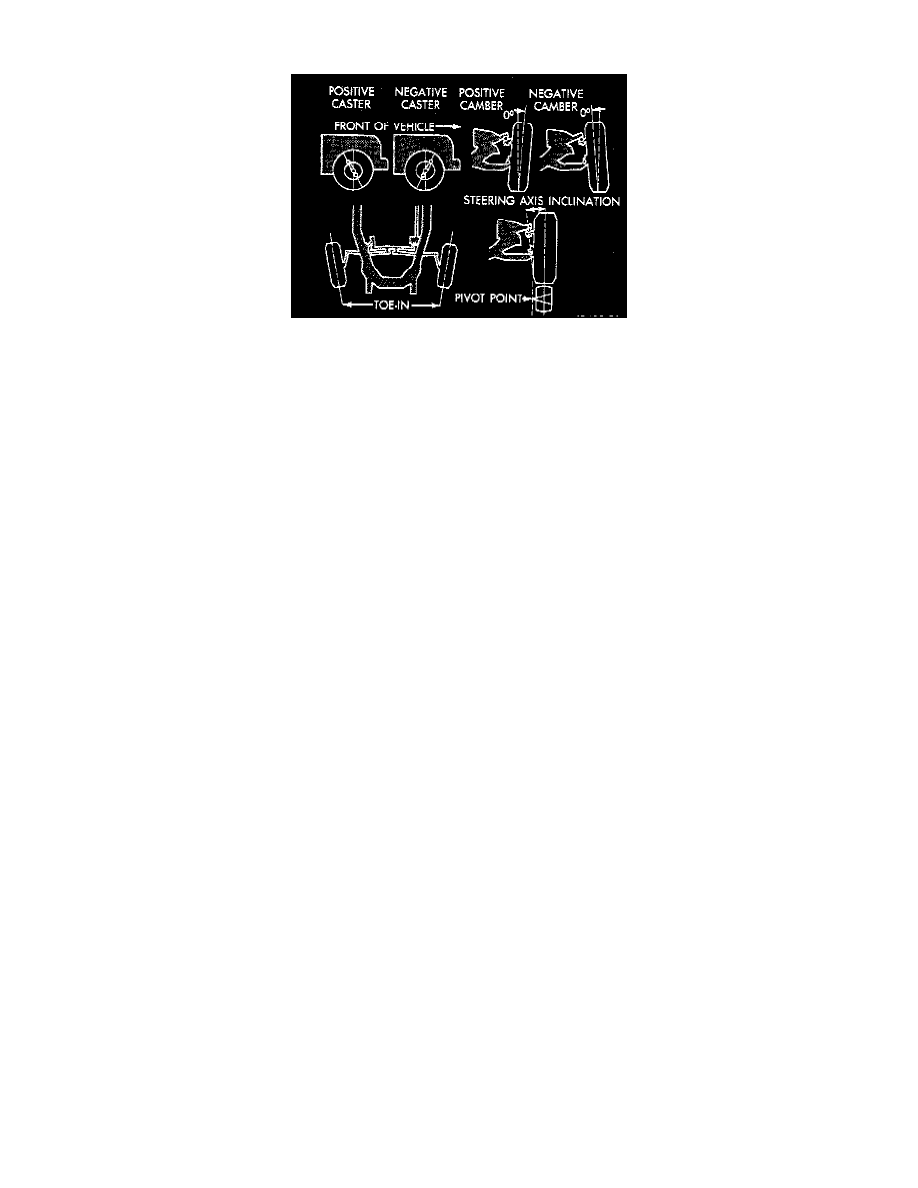RAM 2500 Van V8-318 5.2L VIN T Magnum CNG SFI (1997)

Alignment: Description and Operation
GENERAL INFORMATION
Wheel alignment involves the correct positioning of the wheels in relation to the vehicle. The positioning is accomplished through suspension and
steering linkage adjustments. An alignment is considered essential for efficient steering, good directional stability and to minimize tire wear. The
most important measurements of an alignment are caster, camber and toe.
Caster - is the forward or rearward tilt of the steering knuckle from vertical. Tilting the top of the knuckle forward provides negative caster.
Tilting the top of the knuckle rearward provides positive caster. Positive caster promotes directional stability. This angle enables the front wheels
to return to a straight ahead position after turns.
Camber - is the inward or outward tilt of the wheel relative to the center of the vehicle. Tilting the top of the wheel inward provides negative
camber. Tilting the top of the wheel outward provides positive camber. Incorrect camber will cause wear on the inside or outside edge of the tire.
Toe - is the difference between the leading inside edges and trailing inside edges of the front tires. Uneven wheel toe position cause's unstable
steering, uneven tire near and steering wheel off-center. The wheel toe position is the final front wheel alignment adjustment.
Steering Axis Inclination Angle - is measured in degrees. It is the angle that the steering knuckles are tilted. The inclination angle has a fixed
relationship with the camber angle. It will not change except when a spindle or ball stud is damaged or bent. The angle is not adjustable and the
damaged component(s) must be replaced to correct the alignment.
